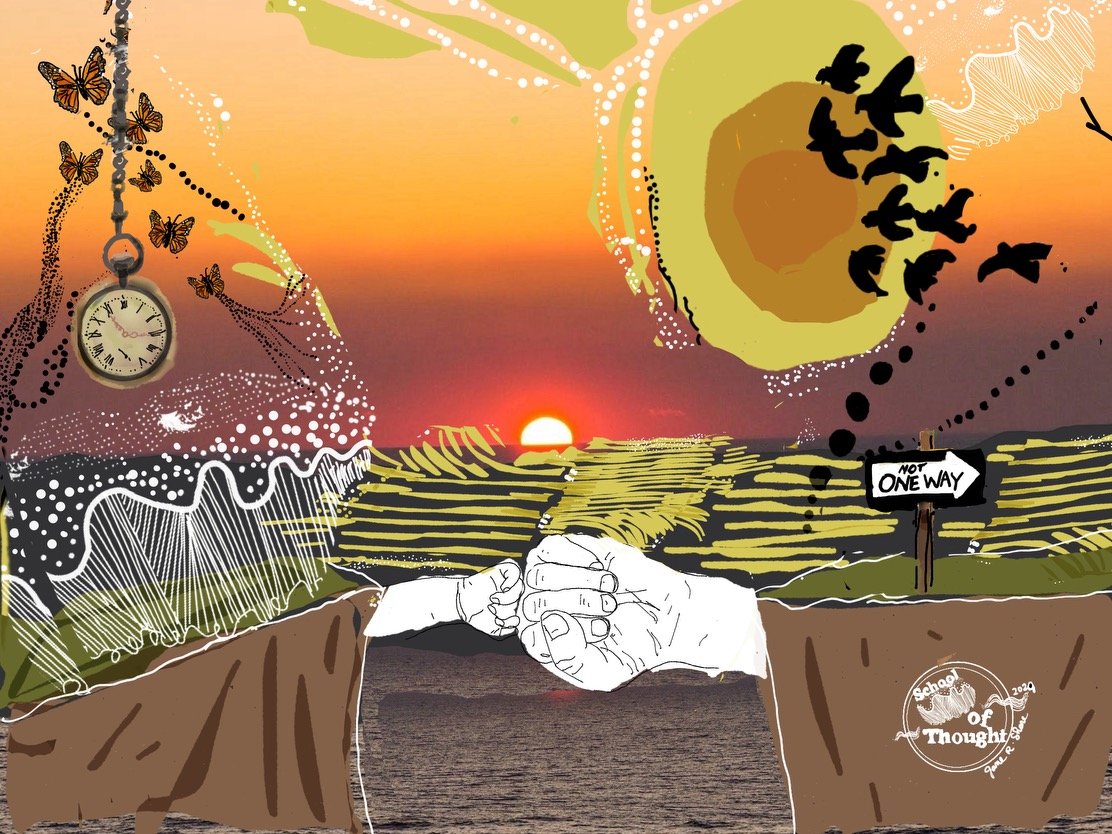
Our Model

The Zones of Community Building
Start with what your community cares about.
Now more than ever, communities need to come together- crossing disciplinary and organizational boundaries. Silos must be broken down.
The Zones of Community Building model emphasizes not just transformation that happens to individuals and groups, but entire organizations and communities as they learn and build and grow. As these connections happen, we understand each other better, we can weave stories of experience and apply them in new ways, we can integrate, not duplicate lessons.
Community building has a thousand forms. We ask how might we capture and cultivate this process of community building for the greater good?
The Zones
To effectively contribute to any movement - to harness ideas, people, and resources for the greater good of humanity - there needs to be relational trust, respect for expertise, honest communication and connection as humans. Essential threads must be seeded in “we”, stemming from true roots between people first, and then growing and branching to necessary strength across missions and work.
How many of the following resonate?
Partnering is transactional, when it could be transformational.
Shared agendas and outcomes are difficult to determine.
Productive partnerships take too much time and don’t last.
It’s hard to find those who may be doing aligned work.
I seek better ways to connect with others to get things done.
I enjoy being involved in projects that make a difference.
Connecting with people and ideas drives my work.
If any of the above feel true for you, keep reading!
Our Model.
-
Purpose.
We begin our work examining the Purpose for coming together across schools and sectors. Here individuals clarify their why.
A goal here is to root ourselves the reason we are together.
Questions to Ask: Here, it is necessary to ask is which of our goals and interests could use community connection.
-
People.
After purpose, our focus is on people and ideas.
A goal here is establishing and understanding the “what”.
Questions to Ask: Who is missing in our conversations? Who are the individuals with lived experiences that we need to better understand?
-
Participation.
Definition: In the Participation stage, convening communities set out to connect language, ideas, and agendas with a focus on understanding one another’s why.
We come together with those who might be asking similar questions, not yet to collaborate, but to participate in each other’s work.
Questions to Ask: What powerful personal, emotional, and/or rational purpose and passion are a driving force behind the potential connections?
-
Projects.
The Project stage means work on co-creating goals, outcomes, and how to get there by collaborating.
Projects begin with the purpose of shared ownership of goals.
Questions to Ask: Are there realistic expectations, adequate preparation among partners of each other’s work, open communications, and a thorough and co-created schedule?
-
Pilots.
At this stage, potential partners look at feasibility, value and connection inoreaching shared goals. The work is to develop clarity and a realistic sense of a collective purpose.
The goal is to step back and create structure to look at outcomes.
Questions to Ask: What mutual benefits does this partnership bring that we could not achieve without partnership?
-
Partnerships.
This stage is marked by more formal structures on collective work.
A goal is to anticipate later-stage challenges to the partnership’s success that can be articulated based on previous engagement.
Questions to Ask: How do we remove barriers that might prevent us from a successful partnership?


